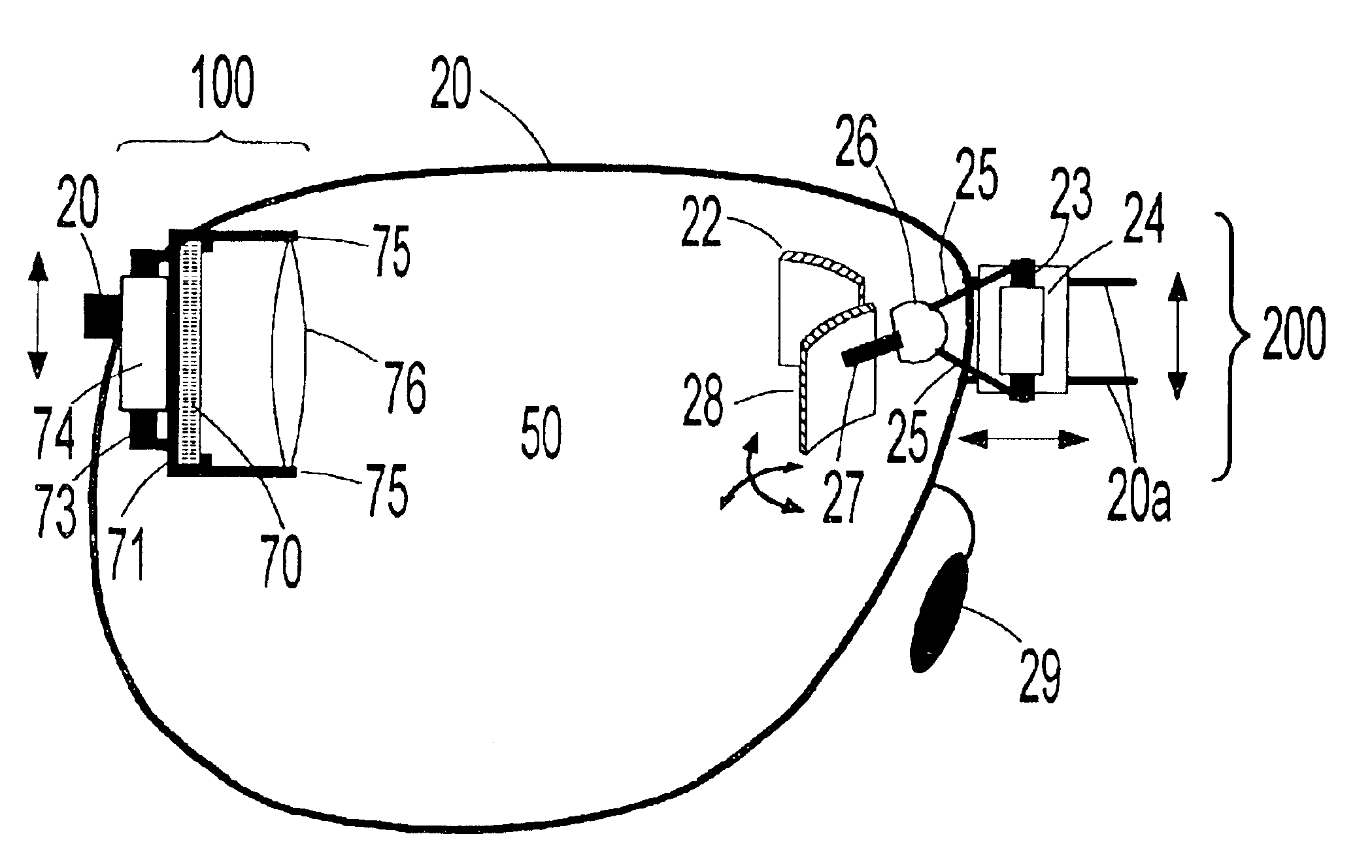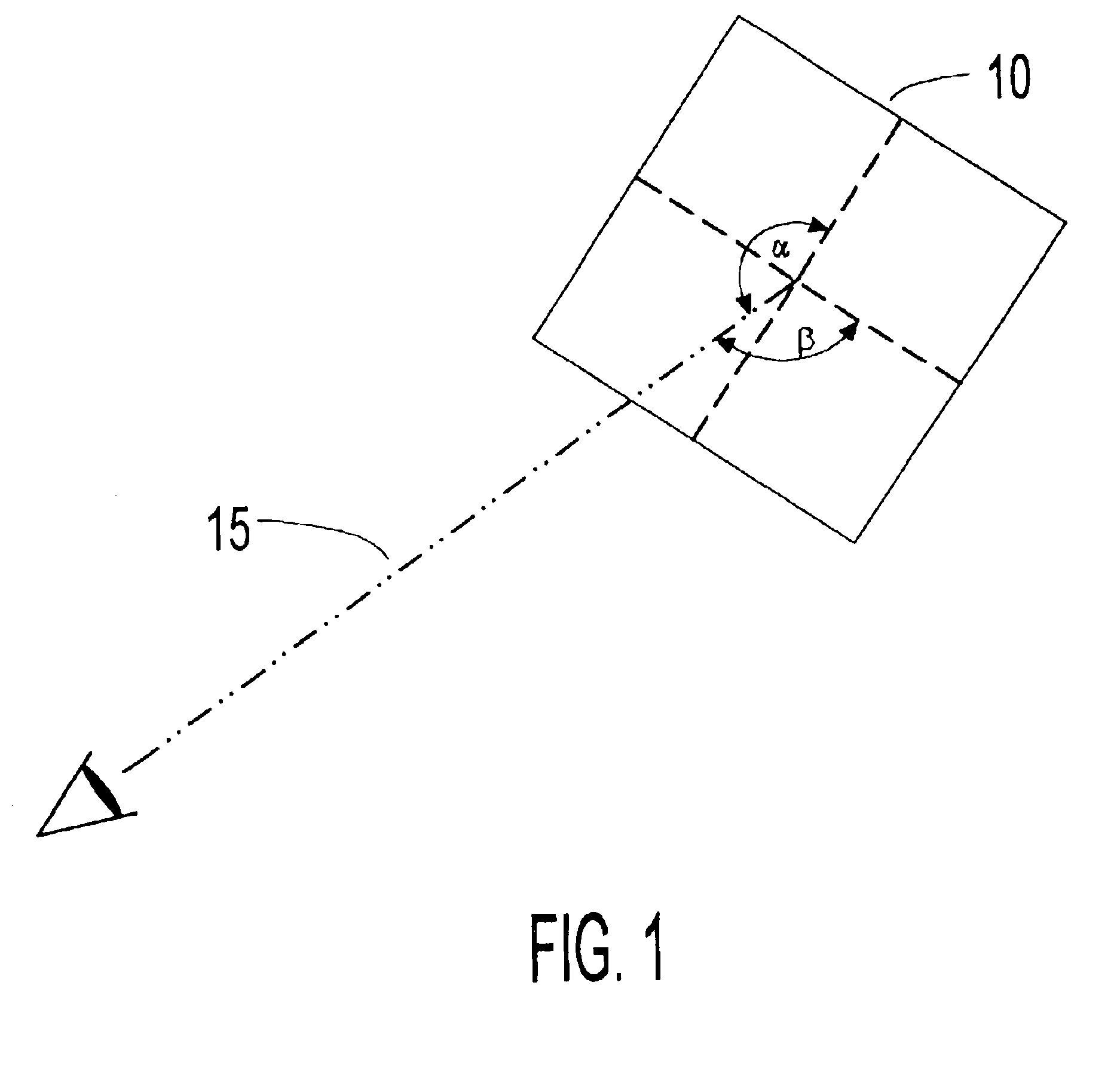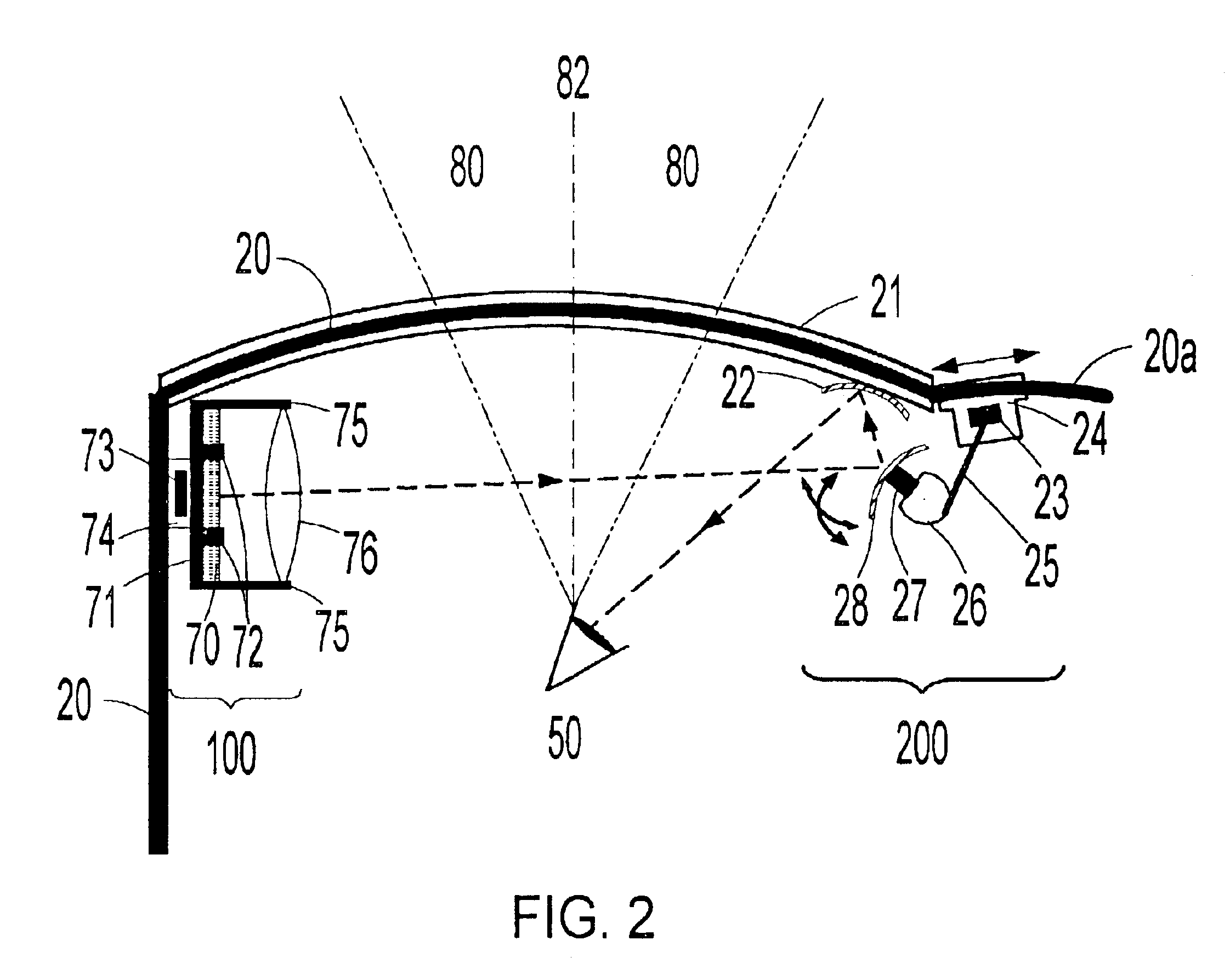Head-mounted virtual display apparatus with a near-eye light deflecting element in the peripheral field of view
a virtual display and peripheral field technology, applied in the direction of instruments, spectacles/goggles, non-optical parts, etc., can solve the problems of occlusion of a portion of the forward fov, its suitability primarily, and increase the complexity of construction, so as to prevent slippage and/or dislodging of the head-mounted support
- Summary
- Abstract
- Description
- Claims
- Application Information
AI Technical Summary
Benefits of technology
Problems solved by technology
Method used
Image
Examples
Embodiment Construction
glasses-mounted VDA is constructed by adding two non-detachable assemblies--for an adjacent folding optic and a microdisplay (Planar AMEL 640.times.480 monochrome microdisplay)--to a metal spectacle frame (Limited Editions: Style SST 20; Size 57 / 18 145). The first alignment means consists of an extended near-eye optic and (stick-friction) translational motion mechanisms (TMMs) integrated into the image source and adjacent folding optic assemblies. A hinge for small angle rotation of the display is incorporated into the image source assembly as a part of the second alignment means. A stick-friction sliding mechanism, incorporated into the attachment and connection between the bridge crosspieces and the adjacent folding optic support bracket, provides an adjustable and controllable focusing mechanism. A hinge, incorporated into the attachment and connection between the adjacent folding optic holder and support bracket is another component of the second alignment means.
Two 20 mm pieces...
PUM
 Login to View More
Login to View More Abstract
Description
Claims
Application Information
 Login to View More
Login to View More - R&D
- Intellectual Property
- Life Sciences
- Materials
- Tech Scout
- Unparalleled Data Quality
- Higher Quality Content
- 60% Fewer Hallucinations
Browse by: Latest US Patents, China's latest patents, Technical Efficacy Thesaurus, Application Domain, Technology Topic, Popular Technical Reports.
© 2025 PatSnap. All rights reserved.Legal|Privacy policy|Modern Slavery Act Transparency Statement|Sitemap|About US| Contact US: help@patsnap.com



